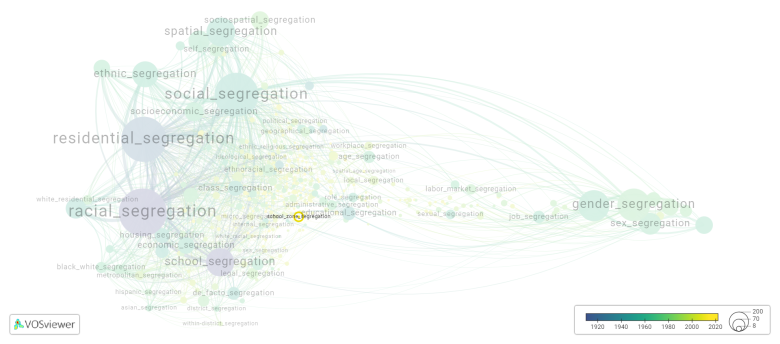School zone segregation
Date and country of first publication[1]
2021
United States
Definition
School zone segregation refers to the practice of dividing school districts or school attendance zones along racial or socioeconomic lines, resulting in unequal access to resources and opportunities for students based on their race or socioeconomic background.
Historically, school zone segregation has been a common practice in many countries, including the United States, where it has perpetuated racial and socioeconomic inequalities in education. This practice has often been driven by housing segregation patterns, where certain neighborhoods have a higher concentration of low-income or minority families, leading to schools in those areas having higher proportions of students from disadvantaged backgrounds.
The consequences of school zone segregation can be significant. Schools in disadvantaged areas often lack adequate resources, including quality teachers, modern facilities, and extracurricular activities. This can result in lower academic achievement, limited college and career opportunities, and a perpetuation of poverty and inequality for students from those communities.
Efforts to address school zone segregation have taken place through various means, such as school redistricting, zoning policies, and magnet or charter schools. These approaches aim to diversify student populations and allocate resources more equitably across school districts and zones. Additionally, initiatives like school choice programs and private school vouchers seek to provide families with alternative educational options outside of their assigned school zones.
While progress has been made in reducing school zone segregation, significant disparities remain in many education systems. Achieving true educational equity will require ongoing efforts to address the underlying factors contributing to school zone segregation, including housing and income inequalities, racial segregation patterns, and systemic biases in education policy and funding.
See also
Related segregation forms
School zone segregation is frequently discussed in the literature with the following segregation forms:
school segregation, residential segregation, income segregation, educational segregation, attendance zone segregation

This visualization is based on the study The Multidisciplinary Landscape of Segregation Research.
For the complete network of interrelated segregation forms, please refer to:
References
Notes
- ↑ Date and country of first publication as informed by the Scopus database (December 2023).
School zone segregation appears in the following literature
Taylor K., Frankenberg E. (2021). Student Assignment Policies and Racial and Income Segregation of Schools, School Attendance Zones, and Neighborhoods. Educational Administration Quarterly, 57(5), 747-775. SAGE Publications Inc..https://doi.org/10.1177/0013161X211024720
